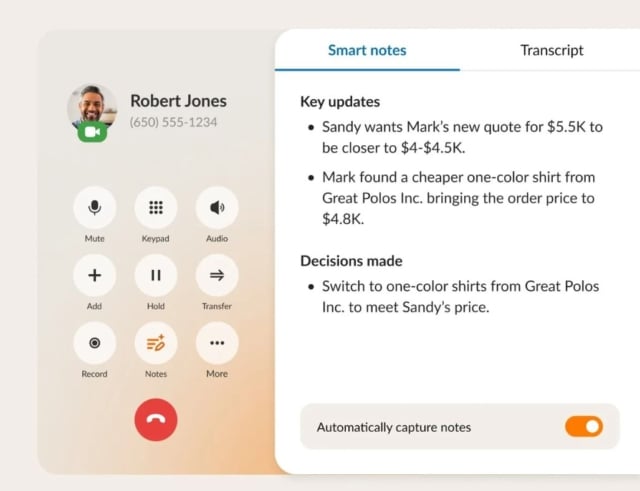Voice recognition technology, a subset of artificial intelligence, has made significant strides in recent years. By accurately converting spoken language into text, it has opened up new possibilities for human-computer interaction. This technology’s ability to understand and respond to spoken commands has transformed various industries, and telephony is no exception.
The integration of voice recognition into telephony systems has become paramount. It enhances customer experiences, streamlines operations, and unlocks valuable insights from customer interactions. By automating tasks, improving call routing, and enabling advanced analytics, voice recognition is revolutionizing the way businesses communicate with their customers.
AI-powered voice recognition is transforming telephony. By converting speech to text, it improves customer experiences, boosts efficiency, and provides valuable insights. This analysis uses RingCentral as an example to showcase the technology’s potential.
What Is Voice Recognition Technology?
Imagine being able to talk to your phone and have it understand you just as well as a human! That’s the magic of voice recognition technology. It allows machines to convert spoken language into text, enabling a more natural way to interact with devices.
This technology has come a long way. Early systems were limited in their vocabulary and struggled with accents or background noise. Today, thanks to advancements in artificial intelligence (AI) and machine learning, voice recognition is becoming incredibly sophisticated.
Types of Voice Recognition Systems:
- Speaker-Dependent: These systems require training on a specific user’s voice to achieve high accuracy. They’re less common nowadays.
- Speaker-Independent: These systems can recognise speech from anyone, regardless of voice characteristics. This is the type used in most smartphones and virtual assistants.
By understanding the basics of voice recognition technology, you’ll gain a deeper appreciation for its transformative impact on telephony and beyond.
____
How Does Voice Recognition Work? – RingCentral as an Example

Imagine voice recognition as a team effort, like a well-oiled cricket match! Here’s how it works, using RingCentral’s Contact Centre AI as an example:
- Capturing Your Voice: First up, it’s similar to taking a recording. Your microphone picks up your voice and converts it into a digital signal.
- Cleaning Up the Signal: Background noise can be a pain, so the system gets rid of it to focus on your voice nicely and clearly.
- Understanding the Sounds: The system then analyses your voice, breaking it down into tiny building blocks of sound called phonemes. Think of them as the letters of the spoken word!
- Putting the Words Together: Like a champion codebreaker, the system uses its knowledge of language and context to figure out the most likely words you spoke.
- From Speech to Text: Finally, by combining all this information, the system turns your spoken words into text, just like magic!
RingCentral’s Contact Centre AI uses these steps to power features like real-time conversation transcription and sentiment analysis, making your calls smoother and more efficient.
____
Voice Recognition Applications in Telephony
Remember that cricket analogy? Voice recognition is like having a whole team working behind the scenes to make your calls smoother! Here’s a look at some ways it’s making things more user-friendly:
-
Automated Customer Service (Say Goodbye to Button Mashing!)
Ditch the endless menu pressing! Voice recognition lets you chat with the system using your voice, just like talking to a friend, to navigate menus and get the help you need.
-
Virtual Assistants and Chatbots (Your Handy Phone Pal)
Stuck on hold? Need to schedule an appointment or get a quick answer? Virtual assistants and chatbots powered by voice recognition are like your 24/7 phone pal, ready to answer basic questions, handle simple tasks, and even troubleshoot issues.
-
Call Routing and Transcription (Never Miss a Beat!)
Voice recognition is like a super clever listener. It can understand who you are and why you’re calling, making sure you get connected to the right person straightaway. It can even write down the conversation in real-time, so you can easily review it later.
-
Voice Biometrics for Authentication (Your Voice is Your Secret Key!)
No more struggling to remember passwords! Voice recognition can recognise you by your unique voice print, just like a fingerprint scanner, making phone security a breeze.
____
AI Integration in RingCentral’s Contact Centre
We’ve seen how voice recognition can transform telephony, but how does RingCentral’s Contact Centre AI make it all happen? Let’s peek under the hood and explore the clever tech behind it:
-
The Power of AI
RingCentral uses artificial intelligence (AI) to supercharge its voice recognition. Think of AI as a super-smart assistant that helps the system understand your voice perfectly. Here’s how AI breaks down further:
-
Learning Machines (Machine Learning Algorithms)
Imagine the system getting better at understanding you the more you use it. That’s machine learning! It analyzes vast amounts of speech data to constantly improve its accuracy.
-
Talking Like a Human (Natural Language Processing)
Not all conversations are created equal. AI uses natural language processing to understand the flow and meaning of your words, even with slang or accents.
-
Getting Even Smarter (Deep Learning Models)
Deep learning is like having a super-powered brain for the system. It allows AI to analyze complex patterns in speech data, leading to even more accurate voice recognition over time.
By combining these elements, RingCentral’s Contact Centre AI creates a powerful voice recognition experience that keeps getting better with every interaction.
____
Implementation Considerations with RingCentral’s Contact Centre AI
Infrastructure Considerations
- Scalability: RingCentral’s Contact Centre AI is designed to scale with your business needs. It can handle a high volume of calls without compromising performance.
- Cloud-Based Solution: RingCentral is cloud-based, eliminating the need for expensive on-premise hardware and simplifying deployment.
Data Privacy and Security Concerns
- Industry Standards: RingCentral adheres to industry-standard security protocols to safeguard your data. This could include certifications like SOC 2 or HIPAA compliance.
- Data Encryption: t RingCentral encrypts data both in transit and at rest, ensuring an extra layer of security.
Training and Calibration Processes
- User-Friendly Interface: RingCentral’s platform offers a user-friendly interface for training and calibrating the AI system. This allows you to customise it for your specific industry and needs.
- Ongoing Optimisation: You can mention that RingCentral provides ongoing support for optimising your AI performance, ensuring it remains accurate and effective.
Seamless Integration:
- Unified Platform: RingCentral’s Contact Centre AI is seamlessly integrated with its entire communication platform. This means no need for complex integrations or managing multiple systems.
- Easy Deployment: RingCentral’s AI can be easily deployed and configured within your existing RingCentral platform, minimising disruption to your operations.
____
Challenges & Opportunities
While AI-powered voice recognition offers a world of possibilities for telephony, it’s not without its challenges. Here’s a closer look at both sides of the coin:
Challenges:
- Accuracy and Reliability: Voice recognition technology isn’t perfect. Background noise, accents, and even speaking styles can lead to errors in understanding. This can be frustrating for both customers and agents.
- Data Privacy and Security: As AI relies on vast amounts of data, concerns arise about privacy and security. Ensuring data is anonymized and stored securely is crucial.
- The Human Touch: While AI can streamline processes, there’s no substitute for human interaction in complex situations. Businesses need to strike a balance between automation and personalized service.
- Ethical Considerations: Bias in training data can lead to biased AI models. It’s important to ensure fairness and avoid discrimination in voice recognition systems.
Opportunities:
- Improved Customer Experience: Faster call routing, real-time transcriptions, and automated tasks can significantly enhance customer experiences.
- Increased Agent Efficiency: AI can automate repetitive tasks, freeing up agents to focus on more complex interactions.
- Data-Driven Insights: Voice recognition can provide valuable insights into customer sentiment and call analytics, allowing businesses to improve their services.
- Accessibility and Inclusivity: Voice recognition can make phone interactions more accessible for people with disabilities or language barriers.
____
Conclusion:
- AI-powered voice recognition is rapidly changing the way we interact with phone systems. From streamlining customer experiences to boosting agent efficiency, it’s a technology with immense potential.
- As we’ve explored, RingCentral’s Contact Centre AI exemplifies how this technology can be harnessed to create a smarter, smoother telephony experience. By leveraging AI’s power, RingCentral offers features like real-time transcription and sentiment analysis, empowering businesses to deliver exceptional customer service.
- However, the journey with AI doesn’t end here. Challenges like accuracy and data privacy require ongoing attention. Finding the right balance between automation and human connection will be crucial in the future of telephony.
- One thing remains clear: the voice of the future is here, and it’s ready to transform the way we communicate. By embracing AI-powered voice recognition and addressing its challenges, businesses can unlock a new era of efficiency and customer satisfaction in telephony.
Originally published May 06, 2024, updated Sep 12, 2024



